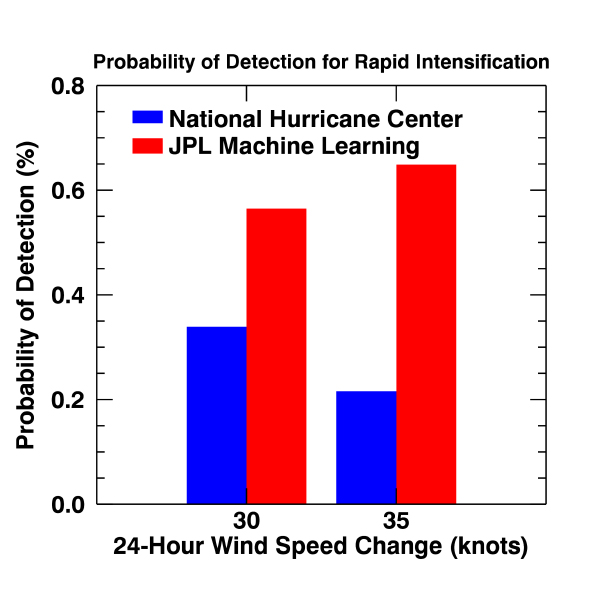
The probability of detection for rapid intensification occurrence in the Atlantic basin during 2009 to 2014 from the National Hurricane Center operational forecast guidance model (blue) and from the JPL machine learning model with NASA satellite data.

The probability that a hurricane suddenly increases in strength depends on many factors, including the internal structures of the storm.
Satellite sensors have been able to measure these factors for over 10 years. These satellites include NASA's CloudSat, TRMM, and the Microwave Limb Sounder on Aura.
Leveraging the IBM Watson Studio, the study developed a novel machine learning model that combines the satellite measurements with existing predictors used by the NHC. This experimental model has the potential to double the skill of rapid intensification forecasts.
References: Hui Su, Longtao Wu, Jonathan Jiang, Raksha Pai, et al. GRL, 2020. This work was supported by NASA, the JPL Data Science Pilot Project, Aura MLS, and CloudSat projects, and IBM.
11.2020